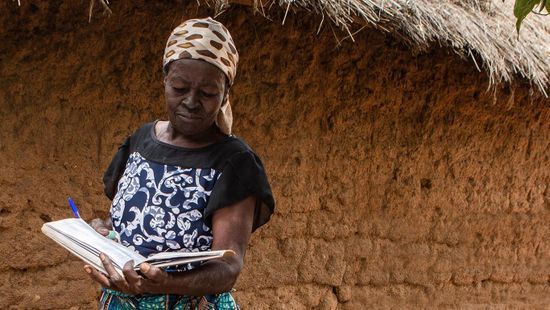
Onchocerciasis – or “river blindness” – is a parasitic disease caused by the filarial worm Onchocerca volvulus transmitted by repeated bites of infected blackflies (Simulium spp.). These blackflies breed along fast-flowing rivers and streams, close to remote villages located near fertile land where people rely on agriculture.
There is a need to reinforce skills of national and district health workers to know and identify the disease, understand the risk factors according to the context and living conditions of the affected communities, and promote the implementation of public health interventions. With the shift from control to elimination, large areas in Africa require mapping to assess whether transmission is active, and treatment required. A sampling strategy named Onchocerciasis elimination mapping has been developed to help countries conduct those assessments and start treatment where needed.
This course examines the epidemiology of Onchocerciasis, clinical aspects, impact, diagnosis, treatment and control, elimination, public health interventions and role of community health workers.
Photo credits: Sightsavers
Language: English
Tropical Diseases
Course information
Onchocerciasis has been included as part of the skin-neglected tropical diseases in the NTD road map 2021-2030 launched by WHO in 2020. Onchocerciasis is transmitted to humans through exposure to repeated bites of infected blackflies of the genus Simulium. More than 99% of infected people live in 31 African countries. The disease also exists in some foci in two countries in Latin America (the Yanomani area in Brazil and Venezuela) and Yemen. The Global Burden of Disease Study estimated in 2017 that at least 220 million people required preventive chemotherapy against Onchocerciasis, 14.6 million of the infected people already had skin disease and 1.15 million had vision loss Population-based treatment with ivermectin (also known as mass drug administration or MDA) is the current core strategy to eliminate onchocerciasis, with a minimum requirement of 80% therapeutic coverage. Four countries have been verified by WHO as free of onchocerciasis after successfully implementing elimination activities for decades: Colombia (2013), Ecuador (2014), Mexico (2015), and Guatemala (2016). Globally 1.8 million people live in areas that no longer require mass drug administration for onchocerciasis.
The course includes background information on skin-NTDs, epidemiology of onchocerciasis, pathogenesis and clinical pathology, diagnosis, treatment, and prevention, socioeconomic impact, and public health interventions.
Certificates: A Record of Achievement certificate will be available to participants who score at least 80% in the final assessment. Participants who receive a Record of Achievement can also download an Open Badge for this course. Click here to learn how.
What you'll learn
- describe an overview to onchocerciasis as a Skin-NTD
- describe the epidemiology of onchocerciasis
- list the clinical features, differential diagnosis and impact of onchocercal skin disease
- outline the diagnosis, treatment, control, complications and referrals of onchocerciasis
- describe the global, national and district situation of onchocerciasis as well as the global elimination strategy
- describe the recording and reporting of onchocerciasis
- describe the impact of public health interventions for onchocerciasis
Course contents
Module 1: Introduction, Epidemiology and Transmission:
This introductory module introduces onchocerciasis as a Skin-NTD skin-NTDs, and epidemiology of onchocerciasis exploring causative organism, transmission, risk factors, geographical distribution (global, national and district), age and gender distribution.Module 2. Clinical Features and Impact:
By the end of this module, you should be able to: explain clinical features of onchocerciasis, recognizing onchocerciasis through changes on the Skin, make a differential diagnosis of onchocerciasis and describe the impact of onchocercal skin diseaseModule 3. Diagnosis, Treatment and Control:
By the end of this module, you will be able to use of Skin snip, Mazzotti test, DEC patch test, Sero-diagnosis and PCR tests for the diagnosis of onchocerciasis, describe the regional control programs; understand the available treatment options; and explain the complications and referralsModule 4. Elimination:
By the end of this module, you will be able to: explain the global, national and district situation of onchocerciasis; describe the Global elimination strategy of onchocerciasis, explain how recording and reporting, and explain the public health interventions to control onchocerciasis from the integrated perspective of One Health.
Enroll me for this course
Certificate Requirements
- Gain a Record of Achievement by earning at least 80% of the maximum number of points from all graded assignments.
- Gain an Open Badge by completing the course.